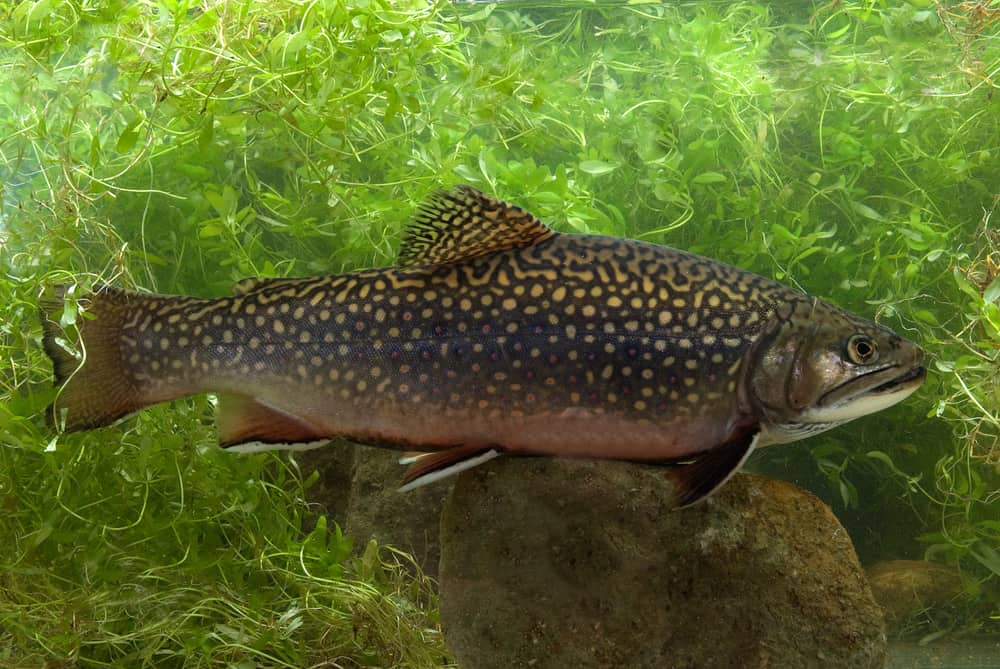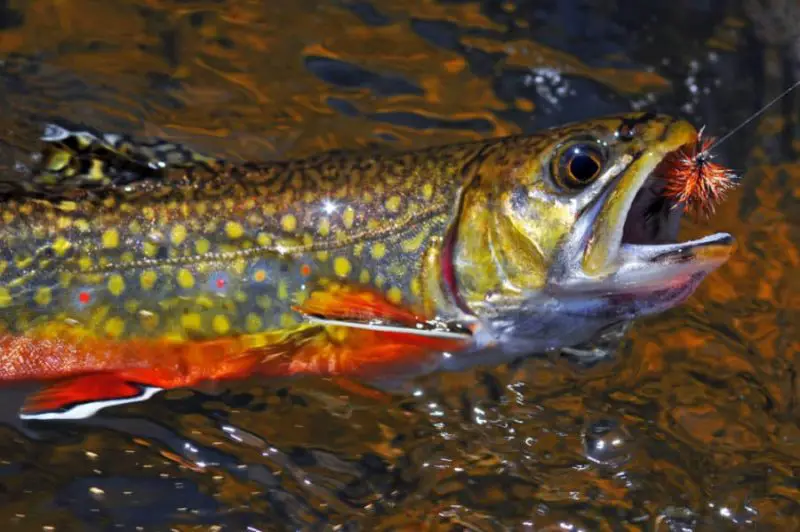Brook Trout are actually Char. Chars are in the genus Salvelinus. On the other hand, Trout are in the genus Oncorhynchus. That was new information to me. A lot of my earliest fishing memories have Brook trout in them. In what I consider my mountains or the mountains that I grew up fishing in and exploring, Brook Trout are the main sport fishing species. I’ve caught a whole lot of them in my 53 years. It never once occurred to me that the fish I was catching was anything but a trout.
According To Behnke
According to Robert J Behnke’s book “Trout and Salmon of North America,” the first European settlers in North America were familiar with trout due to their European Brown Trout experience. However, they were not so familiar with Char, although the fish do occur throughout Northern Europe, the British Isles, and Iceland. When settlers came in contact with North American Char species as in Lake Trout and Brook Trout, they naturally referred to them as trout because they look very similar.
In this way, the North American practice of referring to char species as trout began. It’s a tradition carried on down through the years. Trout is now an accepted designation for Brook Trout, Lake Trout, and Bull Trout. The AFS volume of “Common and Scientific Names of Fishes Fifth Edition” lists the Char species of North America as Brook Trout, Lake Trout, Bull Trout, Dolly Varden Trout, and Arctic Char.
Char is the common name for several fish species of the genus Salvelinus of the salmon family (Salmonidae). There are 11 Char species worldwide.
Chars are Salmonids, closely related to Trout but with a few distinguishing characteristics that place them in their own group.
Char vs. Trout
The following are some characteristics that distinguish Char from Trout.
- Trout have lighter colored bodies and dark colored spots while Char have darker colored bodies and light colored spots.
- Char have a white or lighter colored fringe on the leading edge of their pectoral, pelvic and anal fins. Trout do not.
- Trout have teeth on the roof of the mouth. Chars do not.
- Char have much smaller scales than Trout
The following quote is from the 1997 Us Fish and Wildlife report entitled Bull Trout Facts. “Char (genus Salvelinus) are distinguished from trout and salmon by the absence of teeth in the roof of the mouth, presence of light-colored spots on a dark background, absence of spots on the dorsal fin, small scales and differences in the structure of their skeleton.”
They spawn in fresh water in the fall. Lake Trout primarily spawn in lakes. Arctic Char spawn in lakes or rivers. As a general rule, Bull Trout, Dolly Varden Trout, and Brook Trout spawn in rivers and streams. All char, except Lake Trout have both freshwater and sea-run populations.
In North America, Arctic Char (S. alpinus) is the char species commonly referred to as a char. It’s also the fish that most closely resembles a Brook Trout.

Brook Trout Habitat
Brook Trout prefer cool, well-oxygenated rivers and streams. They also live in Lakes. Some Brook Trout are known as salters. This is due to the fact that they make downstream runs to the sea. This takes place in the months when stream temperatures rise. These fish never venture more than a few miles from river mouths. They will remain at sea for up to three months.
Home Range
Brook Trout are native to the eastern United States and Canada. The waters of their nativity extend as far west as Minnesota and as far south as Georgia.
In northern Ontario Lake, Nipigon and the Nipigon River are world-famous for the giant Brook Trout they produce. The world record Brook Trout weighed fourteen and a half pounds and measured Thirty-one and a half inches in length. It was caught in the Nipigon River in 1915.
Brook Trout Have Been Transplanted Around The World
Today Brook Trout have been transplanted throughout the western United States and Canada and South America, Australia, Tasmania, New Zealand, Iceland, Europe, and Asia. They’re popular with fishery managers for their heartiness. They’re popular with fishermen for their willingness to bite and fighting spirit.
There’s one fault that some lament that Brook Trout have. That is that they are so hearty that they crowd out native trout species.
In the Western United States, Brookies, which are newcomers to the area, are now the dominant species in many river drainages. They pose a threat to the Cutthroat Trout and Bull Trout that are native to the region.
In the Rocky Mountain States, Cutthroat Trout Restoration efforts are underway. This involves removing the non-native Brook Trout and replacing them with native species
In the Book Trout’s native range within the United States, the inverse is true. Brook Trout are being pushed out by non-native Brown and Rainbow Trout.
Brook Trout are actually Char but…
They’ve been referred to as Trout for generations. They’re plentiful in my area, they’re easy to catch and put up a good fight when hooked.
As for me, I’ve got nothing against Char, but it would just seem weird to me to call them Brook Char.
They are revered around the world as a great species of trout so call them whatever you like.
Recent Posts
The only venomous snakes in Washington State are Northern Pacific Rattlesnakes. The Northern Pacific Rattlesnake (Crotalus oreganus oreganus) is a sub-species of the Western Rattlesnake. Anyone...
Skunks are not classified as true hibernators. But they go into a state of torpor when the weather gets cold. Skunks are light sleep hibernators, along with opossums, bears, and raccoons. ...

